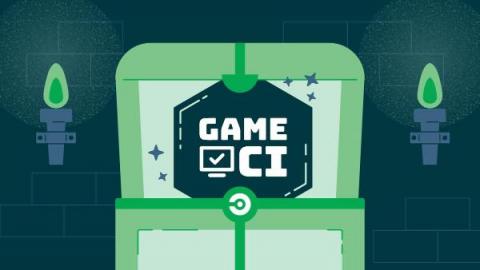Operations | Monitoring | ITSM | DevOps | Cloud
Gaming
CI/CD for Unity game development with GameCI's Unity orb
We recently partnered with GameCI to bridge the gap between CircleCI and the game development scene. This partnership brought forth the Unity orb, a reusable component of config you can plug into your CircleCI configuration file to build and test your Unity projects. For a while now, continuous integration and delivery have been part of the software development cookbook of several software houses and IT departments. However, this is often not the case in game development.
Unity Performance Testing Tools & Benchmarks
The following guest post addresses how to improve your services’ performance with Sentry and other application profilers for Unity. Learn more about Sentry’s Profiling product or try it out now if you’re already a Sentry user. We’re making intentional investments in performance monitoring to give relevant context to help you solve what’s urgent faster.
Unity Exception Handling: A Beginner's Guide
Exceptions are the outcomes you do not usually expect in your application. But as a developer, expecting the unexpected is essential to capture exceptions and handle them appropriately. Exception handling is not only applicable to web development projects but also to Unity applications. This article brings everything you need to know as a beginner to Unity exception handling, including methods to handle exceptions, when to use them, and how to manage exceptions easier using distributed logging.
Key Observability Scaling Requirements for Your Next Game Launch: Part III
So far in our series on scaling observability for game launches, we’ve discussed ways to 1) quickly analyze large volumes of telemetry data and, 2) ensure high-quality telemetry data for more effective analysis at lower costs. The best practices in these blogs outline best practices for scaling observability during game launch day – which is necessary to ensure high performance across all infrastructure components – to ensure no lag, no glitches, and no bugs.
Optimize Unreal Engine builds with BuildGraph and CircleCI
At Vela Games, we use CircleCI for building Project-V, our new multiplayer online co-op (MOCO) game that fuses the teamplay and skill of a multiplayer online battle arena (MOBA) game with the adventure of a massively multiplayer online (MMO) dungeon run.
Key Observability Scaling Requirements for Your Next Game Launch: Part II
In Part I in our series outlining best practices for scaling observability, we reviewed the data analysis capabilities that can help engineers troubleshoot faster during high pressure situations during a game launch. Nobody wants lag time or crashes in their game launch. Similarly, no one wants terminated sessions or for your gamer customers to log off and play a competitor’s game.
Bungie - Groundbreaking Game Universes supported by BigPanda
Key Observability Scaling Requirements for Your Next Game Launch: Part I
After months–or potentially, years–of hard work by teams across a gaming enterprise, when the day arrives for a game launch, the last thing your enterprise needs is slowdowns, glitches, outages or poor performance. It’s the death knell for any game, because for your avid gaming customers, there’s always something else (read: a game that isn’t yours) to check out.










